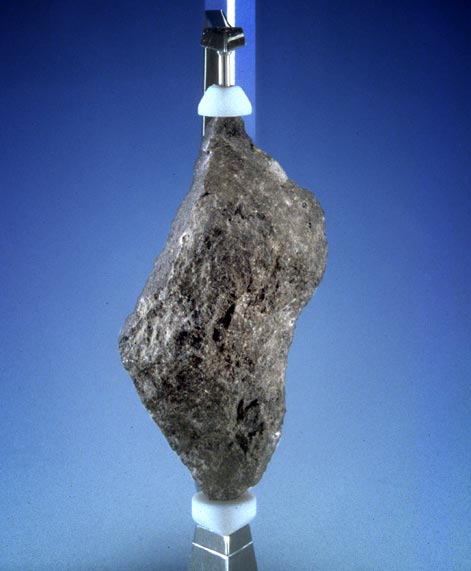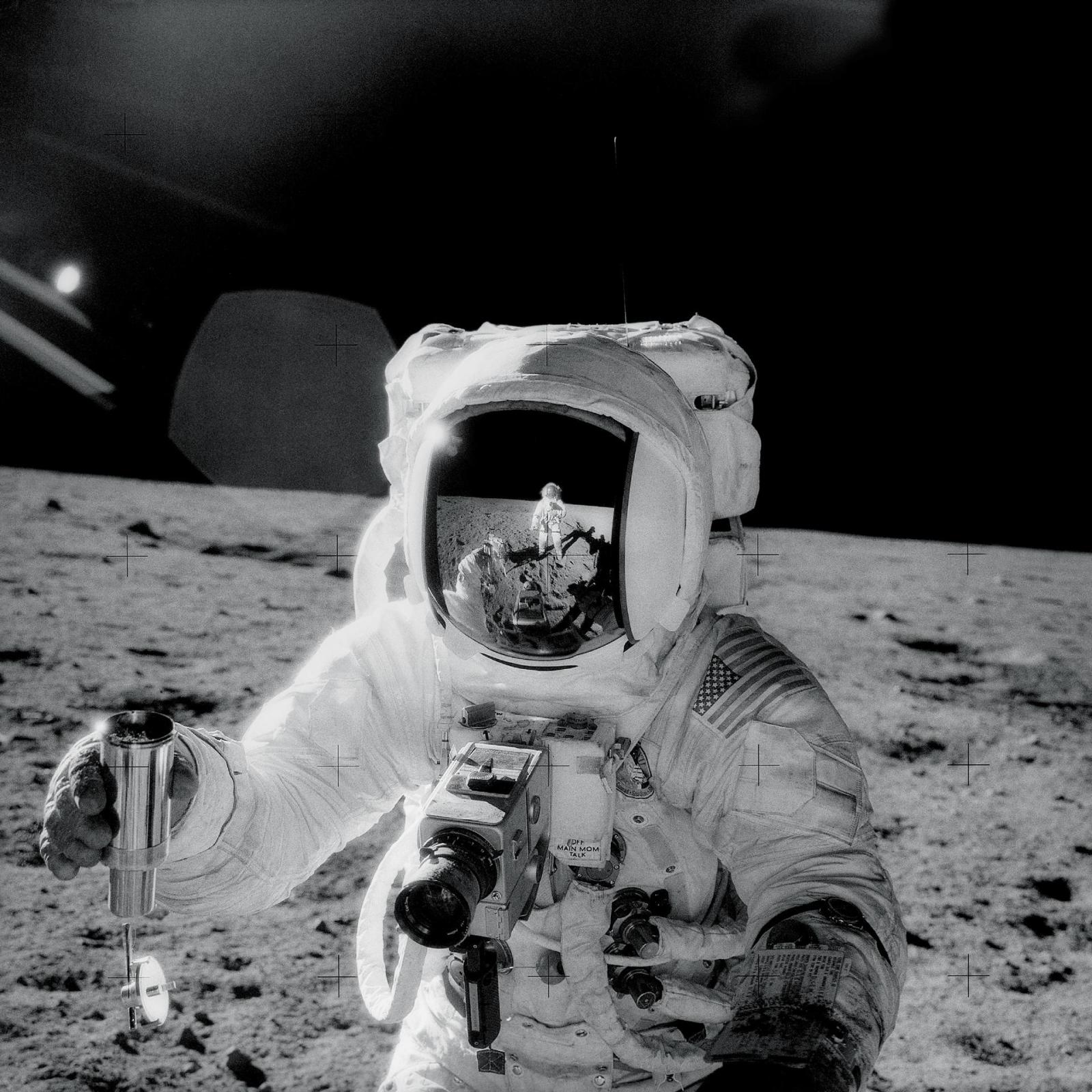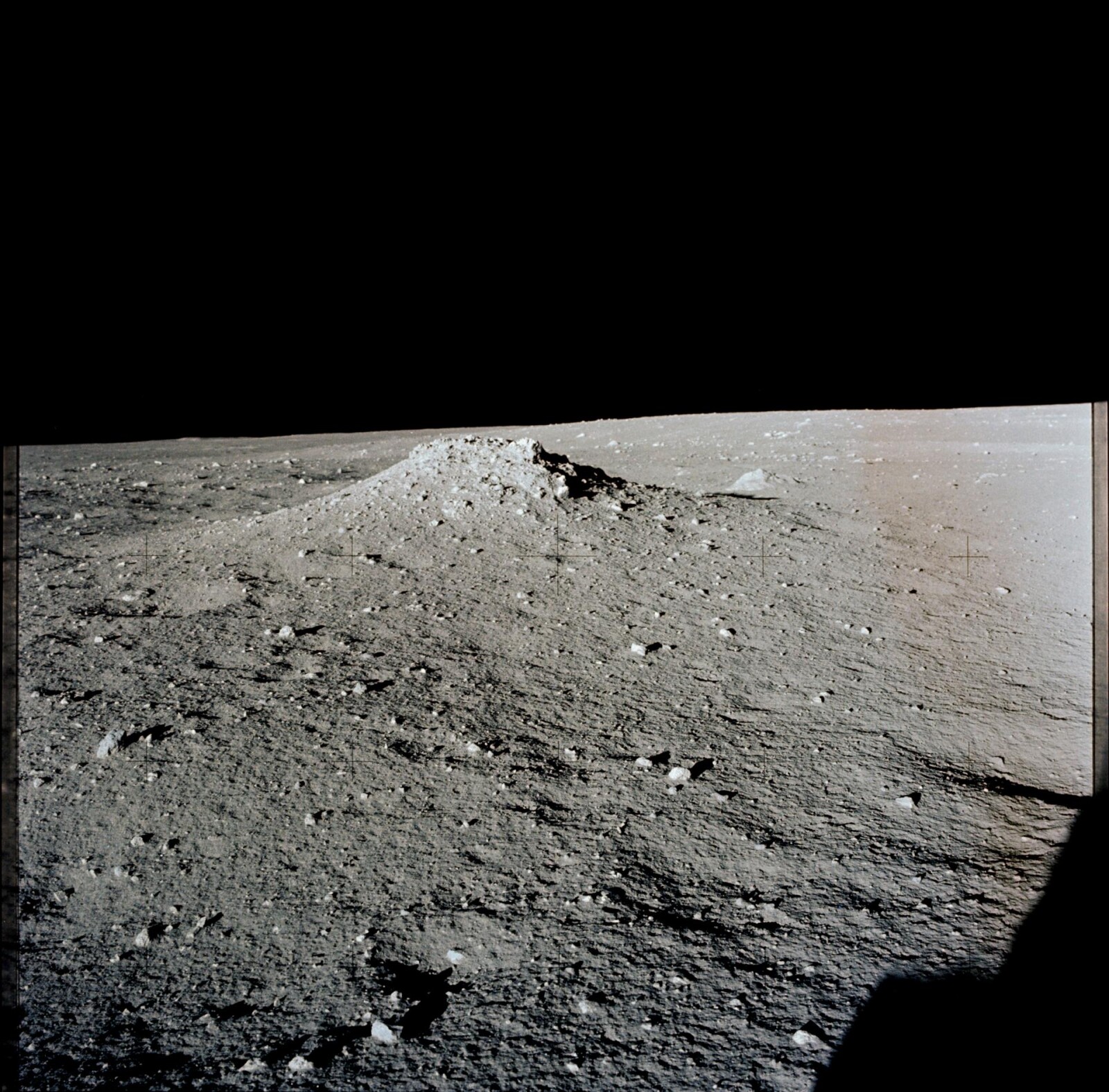Apollo 12 Moon Rock

Moon rock displayed at National Museum Cardiff.
Apollo 12 was the sixth manned flight in the United States Apollo programme and the second to land on the Moon. It was launched on 14 November 1969, from the Kennedy Space Center, Florida, four months after Apollo 11. Astronaut Alan Bean collected samples from the moon to bring back to Earth for research.
The rocks on the Moon are roughly the same age as the oldest rocks found on Earth. They range from about 3.2 billion years up to about 4.5 billion years old. However on Earth rocks this old form just a small part of the surface geology. Most older formations have been destroyed and recycled by plate tectonics.
Today, a piece of Moon rock from the Apollo 12 mission, on loan from NASA, is on display as part of the exhibition The Evolution of Wales at National Museum Cardiff.
The precious rock is kept in a special airtight container to protect it from contamination. At 3.3 billion years old, the Moon rock is considerably older than the most ancient Welsh rock, a mere 711 million years old, is roughly the same age as Lewisian Gneiss (from north-west Scotland), the oldest identified rock in the UK, and is younger than the oldest rock known from Canada (Acaster Gneiss) at 3.9 billion years old. Examples of these three rocks are all displayed alongside the Moon rock.
The moon rock is the most expensive item in the entire museum. Its value is based on the cost of going to the moon to get another piece. It is kept in a protective nitrogen environment; only NASA has a key to open the inner case.
The Museum's Moon rock
Below is a short film produced in July 2009 to mark the 40th anniversary of the Moon landings. (Images and sound copyright of NASA.)
Visit the exact location where this specimen was collected
- Right-click on the link above and choose 'Save Link As...'.
- Open the saved file in Google Earth.
- Requires Google Earth 5.0 or above with view set to 'Moon':

One of the astronauts on the Moon’s surface is holding a container of lunar soil. The other astronaut is seen reflected in his helmet.
You can download Google Earth for free (Mac or PC). To learn more about Google Earth, visit earth.google.com.

One of the astronauts on the Moon’s surface is holding a container of lunar soil. The other astronaut is seen reflected in his helmet.
